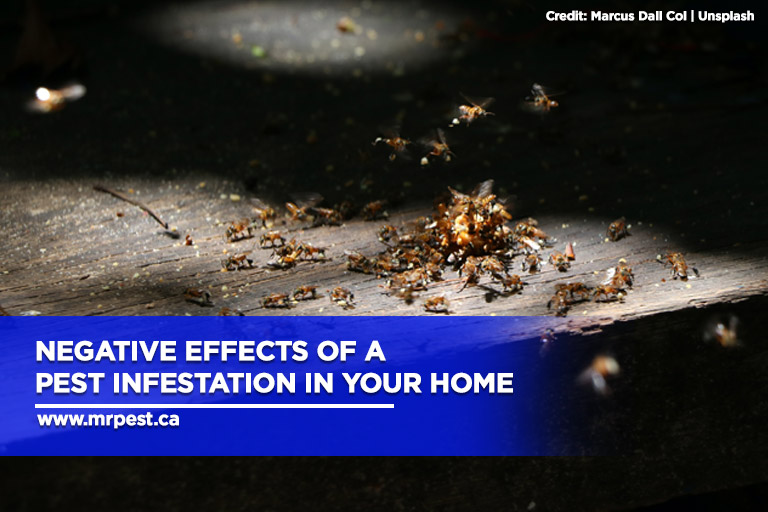Unknown Facts About Eco Bed Bug Exterminators Dc
Table of ContentsThe Ultimate Guide To Eco Bed Bug Exterminators DcEco Bed Bug Exterminators Dc Fundamentals ExplainedThe smart Trick of Eco Bed Bug Exterminators Dc That Nobody is Talking About5 Easy Facts About Eco Bed Bug Exterminators Dc DescribedThe smart Trick of Eco Bed Bug Exterminators Dc That Nobody is Talking About
Since pesticides are poisonous, they are additionally possibly hazardous to humans, pets, other organisms, and the setting. Individuals that utilize pesticides or frequently come in contact with them should comprehend the family member toxicity, prospective health and wellness impacts, and preventative measures to reduce direct exposure to the items they utilize. Threat, or threat, of using pesticides is the potential for injury, or the degree of risk entailed in utilizing a pesticide under an offered collection of problems.
Applicators can lessen or nearly get rid of exposure-- and thus minimize hazard-- by adhering to the tag guidelines, utilizing individual safety apparel and tools (PPE), and taking care of the chemical correctly. Even more than 95 percent of all chemical exposures come from facial direct exposure, mostly to the hands and lower arms. By wearing a pair of unlined, chemical-resistant handwear covers, this kind of exposure can be virtually gotten rid of.
The damaging results that take place from a single exposure by any type of course of entry are labelled "acute effects." The four courses of direct exposure are dermal (skin), inhalation (lungs), oral (mouth), and the eyes. Intense poisoning is figured out by taking a look at the dermal toxicity, breathing toxicity, and oral toxicity of guinea pig.
Some Known Facts About Eco Bed Bug Exterminators Dc.
Severe poisoning is gauged as the amount or focus of a toxicant-- the a.i.-- called for to kill half of the animals in a test population. This action is generally shared as the LD50 (deadly dosage 50) or the LC50 (deadly focus 50). Additionally, the LD50 and LC50 values are based upon a single dose and are recorded in milligrams of chemical per kg of body weight (mg/kg) of the test animal or partly per million (ppm).
The reduced the LD50 or LC50 worth of a pesticide product, the greater its poisoning to humans and pets. Chemicals with a high LD50 are the least toxic to humans if used according to the directions on the product tag. The chronic poisoning of a chemical is figured out by subjecting test pets to long-lasting direct exposure to the energetic component.
The persistent poisoning of a chemical is much more challenging than acute poisoning to establish via research laboratory evaluation. Products are classified on the basis of their loved one acute toxicity (their LD50 or LC50 worths). Chemicals that are identified as extremely harmful (Toxicity Classification I) on the basis of either oral, dermal, or breathing poisoning should have the signal words threat and POISON printed in red with a skull and crossbones symbol plainly showed on the front panel of the bundle tag.
The severe (single dose) dental LD50 for pesticide products in this team ranges from a trace total up to 50 mg/kg. For example, exposure of a couple of decreases of a product taken by mouth can be fatal to a 150-pound individual. Some pesticide items have just the signal word DANGER, which informs you absolutely nothing about the acute poisoning, just that the item can trigger serious eye damages or extreme skin irritability
Getting My Eco Bed Bug Exterminators Dc To Work
In this category, the acute dental LD50 arrays from 50 to 500 mg/kg. A teaspoon to an ounce of this material can be deadly to a 150-pound person (bed bug heater rentals). Pesticide products classified as either a little hazardous or relatively harmless (Toxicity Groups III and IV) are needed to have the signal word CAUTION on the chemical tag

All chemical poisoning values, including the LD50, can be located on the product's Product Safety Information Sheet (MSDS) - bed bug heat treatment. Pesticide tags and MSDS can be obtained from stores or manufactures. Furthermore, a lot of items additionally know that can be located on the this website Net. The symptoms of pesticide poisoning can range from a mild skin irritation to coma or even death.
Individuals likewise differ in their level of sensitivity to various levels of these chemicals. Some individuals might show no response to a direct exposure that may create extreme ailment in others (bed bug treatment). As a result of potential wellness problems, pesticide individuals and handlers must identify the common symptoms and signs of chemical poisoning. The results, or symptoms, of chemical poisoning can be generally defined as either topical or systemic.
Eco Bed Bug Exterminators Dc - An Overview
Dermatitis, or swelling of the skin, is approved as one of the most frequently reported topical impact associated with chemical direct exposure. Signs of dermatitis array from reddening of the skin to rashes and/or sores. Some people have a tendency to cough, wheeze, or sneeze when subjected to pesticide sprays. Some people respond to the strong odor and bothersome results of petroleum distillates made use of as service providers in pesticide products.
This signs and symptom usually subsides within a couple of minutes after a person is removed from the exposure to the toxic irritant. A response to a pesticide product that causes a person not only to sneeze and cough but also to develop severe intense breathing signs is more likely to be a true hypersensitivity or allergic reaction.
Systemic effects are rather different from topical results. They frequently take place away from the initial point of contact as an outcome of the chemical being taken in right into and distributed throughout the body.